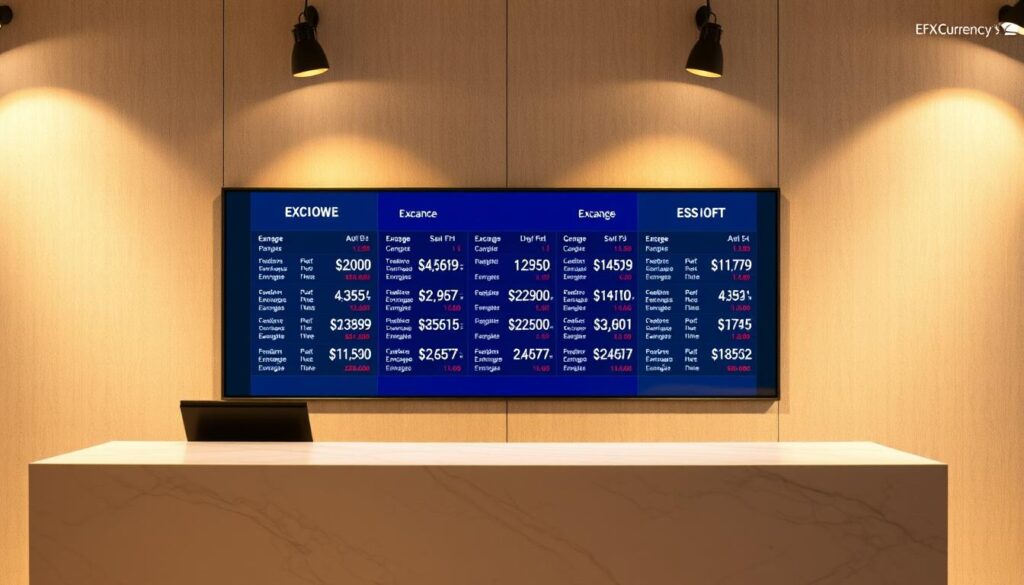Navigating the fast-paced forex market requires a strategy that aligns with your goals and lifestyle. Two popular approaches dominate discussions among newcomers: one focuses on quick, intraday opportunities, while the other targets price shifts over days or weeks. Understanding their differences is critical for anyone starting their financial journey.
Intraday methods involve opening and closing positions within hours or minutes. This demands constant attention, sharp decision-making, and tolerance for rapid market swings. Traders here thrive on volatility but face higher stress due to tight deadlines.
In contrast, medium-term strategies allow positions to develop over several sessions. This style suits those preferring fewer transactions and reduced screen time. It offers breathing room to analyze trends without the pressure of same-day results.
Key factors like time availability, risk appetite, and profit expectations shape which path works best. Beginners must weigh these elements carefully. This guide breaks down each approach’s pros, challenges, and ideal scenarios to help you choose wisely.
Introduction to Trading Styles
The global currency market operates 24 hours a day, five days a week, offering unmatched liquidity and flexibility. With over $6.6 trillion traded daily, it presents numerous approaches for newcomers to explore. Choosing the right method depends on personal goals, available hours, and how much volatility one can handle.
Overview of Forex Trading for Beginners
Currency markets let participants exchange pairs like EUR/USD or GBP/JPY, profiting from exchange rate shifts. Beginners often start with demo accounts to practice without financial risk. Success hinges on understanding leverage, spreads, and how geopolitical events influence prices.
Understanding Short-Term vs. Medium-Term Strategies
Rapid-fire methods target price changes within single sessions, requiring constant monitoring. These suit individuals comfortable making quick decisions under pressure. Technical indicators like moving averages often guide entry and exit points.
Extended approaches analyze trends spanning multiple days or weeks. This style benefits those with limited screen time, as positions develop gradually. Fundamental analysis becomes crucial here, focusing on economic data and interest rate trends.
Key considerations include:
- Time commitment per week
- Preferred analysis tools (charts vs. news)
- Risk management techniques
Defining Day Trading Strategies

Mastering short-term market moves requires a blend of discipline and cutting-edge technology. This approach focuses on capitalising on intraday price movements, with all positions closed before markets shut. Traders here operate in compressed timeframes, often juggling multiple opportunities within a single session.
Core Concepts and Trade Duration
Speed and precision define this method. Positions rarely last longer than a few hours, with many lasting mere minutes. Scalpers might target 10-15 pips per trade, while momentum traders ride brief price surges. Technical charts dominate decision-making, using indicators like RSI or Bollinger Bands to spot patterns.
Essential Tools and Real-Time Analysis
Reliable platforms with lightning-fast execution are non-negotiable. Three critical components separate success from frustration:
- Live price feeds showing bid/ask spreads
- Customisable charting software with historical data
- Economic calendars tracking high-impact news events
Traders often layer multiple indicators – moving averages combined with volume analysis, for instance – to confirm signals. Margin management tools also prove vital, as leveraged positions amplify both gains and losses.
Exploring Swing Trading Strategies

Successful market participation requires strategies that align with evolving trends. Swing trading focuses on capturing shifts that unfold over multiple sessions, offering a balanced approach between rapid-fire methods and long-term investments. This style targets predictable price arcs while avoiding the noise of minute-to-minute fluctuations.
Capturing Medium-Term Market Movements
This method thrives on identifying momentum shifts within established trends. Traders analyze 4-hour or daily charts to spot patterns that signal upcoming opportunities. Key levels like Fibonacci retracements help pinpoint where prices might reverse or accelerate, allowing strategic entries during pullbacks.
Using Technical Analysis and Key Indicators
RSI and Stochastic Oscillators reveal overbought or oversold conditions, while moving averages highlight trend directions. Combining these tools with volume analysis creates confirmation signals. For example, a rising 50-day MA paired with bullish RSI divergence suggests sustained upward potential.
Fundamental factors like earnings reports or interest rate decisions add context to chart patterns. This dual-lens approach helps traders ride the middle phase of price waves – where movements are strongest and most predictable. Risk management remains crucial, with stop-loss orders placed beyond recent swing points.
Benefits of Day Trading for Beginners

Newcomers to currency markets often seek approaches that deliver tangible results quickly. Day trading stands out by offering immediate feedback loops and structured learning environments. Unlike longer-term methods, this style provides clear outcomes within hours, helping traders refine tactics efficiently.
Quick Trade Execution and Fast Returns
Closing all positions before market close eliminates concerns about overnight price gaps or weekend volatility. Traders avoid unexpected losses from geopolitical events or economic reports released during off-hours. This controlled timeframe reduces stress for those managing limited capital.
Multiple daily transactions accelerate skill development. Each trade offers insights into pattern recognition and risk management. Beginners gain practical experience faster than with weekly or monthly strategies, turning theoretical knowledge into actionable expertise.
Leveraged positions allow smaller accounts to participate meaningfully. While amplifying potential gains, this requires disciplined stop-loss orders. Successful practitioners focus on consistency over home-run plays, using these key tools:
- Real-time chart alerts for entry/exit signals
- Pre-defined profit targets per transaction
- Daily loss limits to preserve capital
Quick profits, when achieved responsibly, boost confidence and fund further education. However, beginners must balance enthusiasm with strict money management rules to sustain long-term growth.
Benefits of Swing Trading for Beginners

Building sustainable skills in forex doesn’t require round-the-clock screen watching. Swing trading offers newcomers a balanced path to market participation, blending strategic analysis with lifestyle flexibility. This approach helps traders avoid burnout while building confidence through manageable, multi-day positions.
Flexible Scheduling and Potential for Bigger Gains
Swing trading adapts to busy lives, requiring just 30-60 minutes daily for market analysis. Traders hold positions for several days or weeks, capitalizing on broader price arcs instead of fleeting intraday moves. This extended timeframe reduces emotional decision-making and allows thorough research.
Three core advantages make this style ideal for beginners:
- Lower transaction costs from fewer trades
- Reduced stress through deliberate planning windows
- Opportunities to capture 3-5% price swings per position
Profits often outweigh rapid-fire strategies because positions ride sustained trends. A single successful EUR/USD trade spanning five sessions could yield returns equivalent to ten quick scalps. Technical tools like weekly Fibonacci levels help identify high-probability entries without constant monitoring.
New traders particularly benefit from analyzing past trades. Reviewing multi-day charts post-execution reveals patterns missed during live markets. This learning loop accelerates skill development while keeping capital exposure manageable.
Key Differences Between Day Trading and Swing Trading

Choosing between market approaches depends on understanding critical operational contrasts. Each method shapes time commitments, stress levels, and financial outcomes differently. Let’s examine how these strategies diverge in practice.
Comparing Trade Durations and Frequency
Intraday methods demand non-stop attention, with positions rarely exceeding a few hours. Practitioners might execute 10-20 trades daily, chasing small price movements. Screen time becomes mandatory, as markets move rapidly within compressed windows.
Medium-term strategies operate on weekly timelines. Positions develop over multiple sessions, requiring just periodic check-ins. This reduces transaction numbers – often 2-5 weekly – while targeting larger percentage gains per trade.
Risk Exposure and Capital Needs
Rapid-fire traders avoid overnight surprises but battle intense volatility. Margin leverage allows smaller accounts to participate, though frequent trades accumulate commission costs. Stop-loss orders become essential shields against sudden reversals.
Extended holders face weekend gaps and news-driven shocks. Their capital must withstand wider price swings, often necessitating larger buffers. However, fewer transactions mean lower fees over time. Key considerations include:
- Overnight funding charges for multi-day positions
- Margin requirements for leveraged intraday plays
- Psychological stress from constant monitoring vs. waiting
Beginners should assess their risk tolerance and account size carefully. While quick methods offer instant feedback, medium-term approaches provide breathing room to refine decision-making skills.
Deep Dive: day trading vs swing trading
Successful currency market strategies hinge on understanding how profit timelines shape outcomes. Intraday methods and medium-term approaches operate on fundamentally different reward systems, each demanding specific psychological and analytical skills.
Evaluating Short-Term Profits vs. Extended Gains
Intraday practitioners thrive on rapid execution, targeting modest gains from fleeting market moves. They might complete 10-15 transactions daily, aiming for 0.5-1% returns per trade. This volume-based model relies on strict 1:1 risk-reward ratios – potential losses mirror expected gains.
Medium-term strategies pursue larger price arcs spanning multiple sessions. Traders here accept fewer opportunities but target 2-3% returns per position. A 2:1 risk-reward framework allows absorbing occasional losses while maintaining profitability through fewer successful trades.
Key contrasts emerge in three areas:
- Transaction frequency: High vs. selective
- Profit concentration: Distributed vs. focused
- Analysis depth: Technical snapshots vs. trend synthesis
Newcomers often underestimate the mental stamina required for rapid-fire methods. While medium-term approaches reduce screen time, they demand patience during position development phases. Choosing between these models depends on personal tolerance for pressure versus delayed gratification.
Analyzing Trade Execution Timeframes
Timeframe selection shapes how traders interpret price action and manage risk. Shorter charts reveal intricate movements but demand sharp filtering skills to separate signals from distractions.
Impact of Market Noise and Volatility
Day traders using 15-minute charts face constant price zigzags. These micro-movements often lack meaningful patterns, creating false signals that challenge quick decisions. Temporary reversals can trigger premature exits, eroding potential gains.
Four-hour to weekly charts used by swing traders smooth out erratic fluctuations. Longer timeframes highlight dominant trends, letting practitioners ignore minor volatility spikes. This clarity supports confident entries during pullbacks in established directions.
Market noise decreases as chart intervals expand. While rapid strategies require reacting to every tick, medium-term approaches focus on high-probability setups. Beginners often find fewer, well-analyzed trades less mentally taxing than constant screen monitoring.
Choosing between these styles hinges on one’s ability to handle uncertainty. Some thrive in fast-paced environments, while others prefer strategic planning windows. Both paths require disciplined risk management to navigate their unique challenges.



